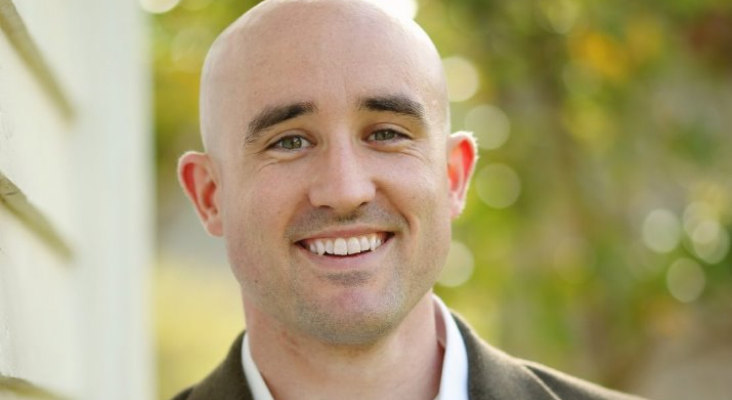Ask an Advisor: I'm 40 and My Partner Is Disabled. Do I Need More Life Insurance?
I’m currently 40, and my existing 20-year term policy for $250,000 will expire at age 53. I also have about $100,000 in coverage through my employer, which I would lose if I switched jobs.
My partner is disabled, unable to work, and we have no children or other dependents. My insurance agent gave me a quote for an additional 30-year, $250,000 term life policy but it costs 2.5 times my current premium. How do I determine how much life insurance I need?
-Randy
You seem to be putting this in the right context. The primary purpose of life insurance is to provide for the people who depend on you in the event that you die. It sounds like, in your case, your partner is the main focus.
Ask yourself how much money your partner would need to afford the lifestyle they want if you were no longer here.
The answer to that question is two-fold. First, determine the lifestyle you’d want them to have after your death. Then, estimate the dollar figure that would provide for that lifestyle. (And if you need help selecting a life insurance policy, consider working with a financial advisor.)
What Kind of Lifestyle Will Your Partner Have?
You and your partner need to talk about how they would plan to live if you aren’t around. That plan may include making major lifestyle changes such as moving closer to family. Or it may involve just a few minor changes such as hiring someone to help clean occasionally. The point here is to define your partner’s needs before you jump into the numbers.
Make sure you consider any adaptations your partner would need in your absence. If you do things like bathe them, shop for groceries or handle other basic necessities, think about how they would fill those same needs without you. (And if you need help jumpstarting this conversation, talk with a financial advisor.)
Estimate Your Partner’s Expenses
After identifying your partner’s needs, you can start tallying up the cost of their lifestyle. Adding up these expenses will help you determine how large of a life insurance death benefit you’ll need. After all, your life insurance policy is what will help support your partner.
If your partner is going to require additional professional care, get some estimated costs of those services. Maybe you want to pay off the house, so they don’t have to worry about it? If so, include any remaining mortgage balance in your policy figure. Don’t forget burial expenses, too.
Since your partner is unable to work, they’ll likely need to replace your income or at least a portion of it. I also suggest talking to your tax preparer to properly understand how your partner’s tax situation might change in the event of your death.
If you’re ready to be matched with local advisors that can help you achieve your financial goals, get started now.
Consider an Immediate Annuity
A simple way to ensure your partner’s bills are paid is to price an immediate annuity that would provide the needed cash flows to cover those expenses. That’s as simple as getting a quote from an insurance company.
Suppose your partner needs $3,000 per month to cover recurring expenses. You’ll have to find out how much an immediate annuity would cost today that would provide $3,000 per month. You’d then get a life insurance policy for that amount, which your partner could use to purchase an immediate annuity. Keep in mind that annuity payouts can change from the time you purchase the life insurance policy until the time your surviving partner buys one. You’ll need to reevaluate periodically. (And if you need help purchasing an annuity, consider working with a financial advisor.)
Your Need for Life Insurance Goes Down Over Time
Of your two personal policies, you mention that $250,000 of your coverage would stop at age 53 and the other half would be in effect until age 70.
I can’t say whether that’s the right amount and timing, but in general, your life insurance needs should go down over time for a number of reasons. The two main reasons are:
As you age, your partner will have fewer years of your income to replace. If you make it to age 60 for example, that would be 20 fewer years of expenses the policy would need to cover.
Assuming you are also saving for retirement, your account balance should grow over time. That money also would be available to cover some of your beneficiary’s needs.
As far as the quote that you received, you can expect premiums will continue to go up as you get older. It would be better to get the coverage you need sooner rather than later. Life insurance companies are well aware that insuring a 33-year-old is a better bet than a 40-year-old, who in turn is a better bet than a 60-year-old.
Bottom Line
Figuring out how much life insurance to get first starts with determining what your partner will need when you’re gone. You can then tally up those expenses to get a more accurate picture of how much coverage you need. Just keep in mind that the cost of life insurance will only increase as you get older.
Tips for Finding a Financial Advisor
Finding a financial advisor doesn’t have to be hard. SmartAsset’s free tool matches you with up to three vetted financial advisors who serve your area, and you can interview your advisor matches at no cost to decide which one is right for you. If you’re ready to find an advisor who can help you achieve your financial goals, get started now. You can also read SmartAsset reviews.
Consider a few advisors before settling on one. It’s important to make sure you find someone you trust to manage your money. As you consider your options, these are the questions you should ask an advisor to ensure you make the right choice.
Keep an emergency fund on hand in case you run into unexpected expenses. An emergency fund should be liquid -- in an account that isn't at risk of significant fluctuation like the stock market. The tradeoff is that the value of liquid cash can be eroded by inflation. But a high-interest account allows you to earn compound interest. Compare savings accounts from these banks.
Brandon Renfro, CFP®, is a SmartAsset financial planning columnist and answers reader questions on personal finance and tax topics. Got a question you’d like answered? Email AskAnAdvisor@smartasset.com and your question may be answered in a future column.
Please note that Brandon is not a participant in the SmartAsset AMP platform, nor is he an employee of SmartAsset, and he has been compensated for this article.
Photo credit: ©iStock.com/sturti, ©iStock.com/Luke Chan
The post Ask an Advisor: Do I Need More Life Insurance? I’m 40, My Partner’s Disabled and I Can’t Rely on My Current Life Insurance Policies Forever appeared first on SmartAsset Blog.

 Yahoo Finance
Yahoo Finance 


